Yoga in Kiev
The capital of Ukraine Kiev, or Kyiv, is a very interesting place in what concerns yoga. This place gave birth to many unique styles of yoga, such as Vajra, Universal yoga, Yoga23 and Ishvara yoga. These original styles are even more popular in Kiev than internationally known brands like Ashtanga Vinyasa, Iyengar and the others.
I think, there are several reasons for such situation. First, the first yogis in Ukraine (like in the rest of the former USSR) did not start their practice with Indian teachers. Most often they had a self-practice based on some yoga books. All the initial knowledge came from books. Thus, Andrey Sidersky developed his method of breathing in water, “Plavita Sadhana”, based on the book of Selvajaran Yesudian “Yoga and health”. This method is still widely used by professional swimmers. Likewise, Anatoliy Pakhomov writes in his book that he started his yoga practice by doing exercises outlined in medieval treatises like Hatha Yoga Pradipika. As a result of such self-tutoring on yoga, these practitioners have developed their own understanding and interpretation of yogic discipline, which was shaped by their own experience and also by critical analysis of exercises from the point of view of modern physiological and anatomical knowledge. Of course, most these teachers have practiced with other teachers as well, but very often, by the time of such practice, they have already formed their own approach to yoga.
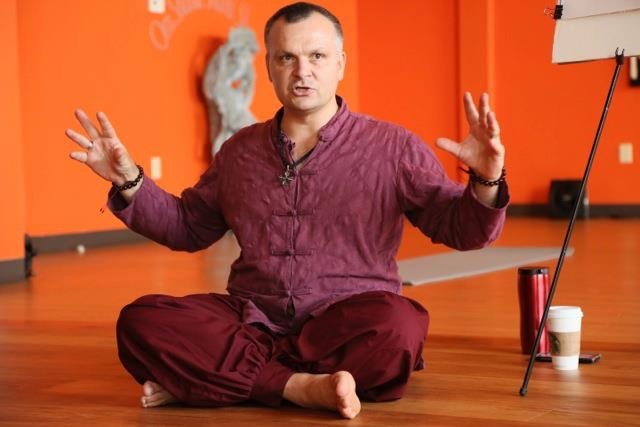
Secondly, the styles that have been developed in Kiev are sometimes even more interesting and more well-thought-out than many internationally renowned brands. My impression that Kyiv yoga styles are more elaborate because of their methodology, the logic of building training sequences and using particular exercises in the practice of yoga of appropriate levels. I think, one of the contributing factors is that Kiev practitioners did not have a direct lineage from a guru with ancient tradition (because traditional styles cannot be changed by individual teachers). That’s why teachers of Kiev had more freedom to approach the practice critically and creatively, to add elements from other disciplines such as chi gong or cardiovascular elements, and remove practices that they consider inappropriate or dangerous.
As of June 2017, a drop-in class in most of Kiev studios cost 100-120 UAH, in some studios the classes cost 150-170 UAH. Sometimes you can visit the first class free of charge or with a discount. In spring and summer, many teachers have their classes in parks, and these classes will cost even less, from 70 to 100 UAH. And if you take a package of 4-12 classes, each class will cost even less. If you think about it, it’s just $4-$5 per class. It is actually cheaper than most of the classes in Rishikesh, and India used to be a very popular destination for yoga practitioners because of affordability of daily practice, among other things.
Moreover, in Kiev studios, you have more chances to get to a class of a qualified, experienced and really enthusiastic instructor as opposed to Rishikesh, where you certainly can find great teachers, but also a lot of instructors who teach exclusively for teacher training business, sometimes without proper training themselves. But of course, in Kiev, just like everywhere, you can get to a class with an inexperienced or unqualified teacher. Since yoga studios in Kiev do not have unified standards for qualification and training of yoga teachers, you need to be careful with your choice of instructor. Some teachers improve their skills through years of practice and observation of their students, some study in colleges of physical education, others are self-educated in physiology and biomechanics, many visit numerous workshops and trainings. But there are still many teachers who just repeat what their first teacher has taught them without ever questioning it. That’s why it may be a good idea to read reviews about yoga teachers in Kiev, especially if you have some health or movement issues. Or at least talk to your teacher before the class to see how well they know your problem.
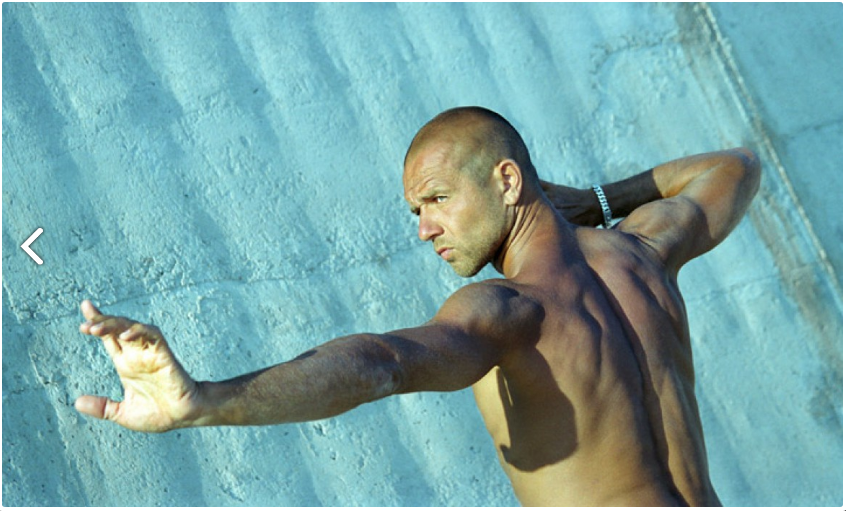
In Kiev, it is quite easy to have a class with a teacher who is a “legend” in post-soviet yoga or a founder of some well-known style. And you do not have to sign up for a special workshop, wait for months, pay special fees or do anything like that. These teachers very often have regular drop-in classes in their studios, and you can come there, practice with them and ask them any questions (just like we did for our series of interviews with Ukrainian yoga teachers). Of course, not all teachers are that accessible, Andrey Lappa and Andrey Sidersky do not have regular classes, but you can still practice with people who have been their main students or helped to develop the style.
I know several experienced yoga teachers from Moscow, who come to Kiev for several weeks just to go and have drop-in classes with teachers of Yoga23, Ishvara or other styles, to improve their practical skills and get new insights.
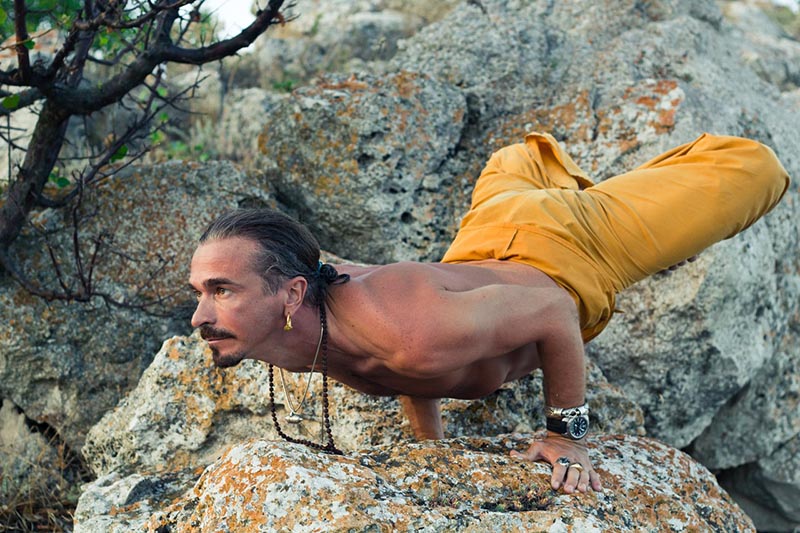
As some yoga instructors in Kiev have told us, people mostly come to yoga studios to improve their health and get fit, to move and also, as an added benefit, to quiet their mind and better manage their emotions.
That’s why, the classes have mostly physical elements: asanas and vinyasas, physical exercises. Pranayamas are often performed while holding poses (for example, in Universal yoga and Yoga23 a particular breathing is performed while holding the asanas). Quite often the classes are physically challenging. However, there is one yoga style in Kiev, Vajra yoga, that pays a lot of attention to meditations, energetic locks, abdominal practices (agni sara, nauli, etc) and breathing exercises. The physical aspect of Vajra yoga classes is quite soft and excludes elements that can cause injuries. This style stresses meditative aspect of yoga and safety of practice, is accessible to everyone, even people with serious disabilities and injuries, and is quite popular in Ukraine, Russia, Belarus and other countries.
There are also Ukrainian yoga styles that particularly stress physical aspects of the practice, such as dynamic endurance (like Universal yoga), static strength and stamina with particular attention to the prior development of core muscles and perfecting physical condition before practicing any energetic elements (Yoga23). There are methodologies that develop physical strength while paying a lot of attention to energetic locks, abdominal manipulations, and methods of developing the perception of the interconnectedness of body parts (Ishvara yoga).
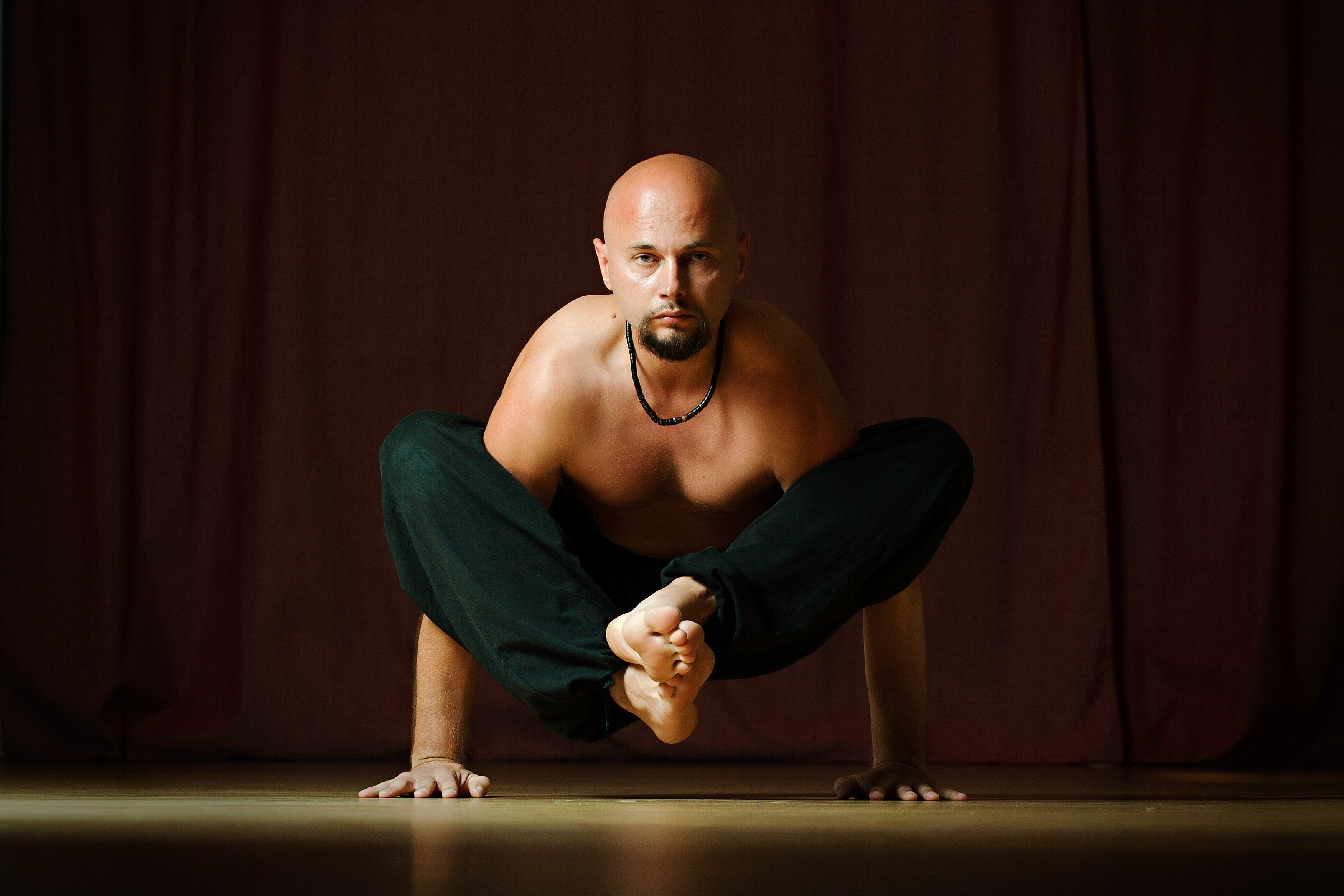
Because of the great diversity of Kiev’s own yoga styles and their high efficiency, international brands are not as popular in Kiev as in other countries, although many yoga studios and teachers have classes in ashtanga vinyasa. Iyengar yoga is also not as popular as in Europe, in Kiev, only a handful of instructors teaches this style. Kundalini yoga is also not particularly widespread, although there are several kundalini teachers. Acro yoga and fly yoga are gaining popularity in Kiev studios.
Along with that, there is a great diversity of hatha yoga in Kiev. Very often, in western countries, if the class is titled “hatha yoga’, one can expect soft and slow class, the beginning level of practice. In Kiev, hatha yoga class can be quite intensive. It can be any type of practice - static, dynamic, easy or challenging - without limitations of any particular style. Since many Kiev instructors (especially older ones) started their practice either with Andrey Siderski or Andrey Lappa, their sequences can contain elements of these styles.
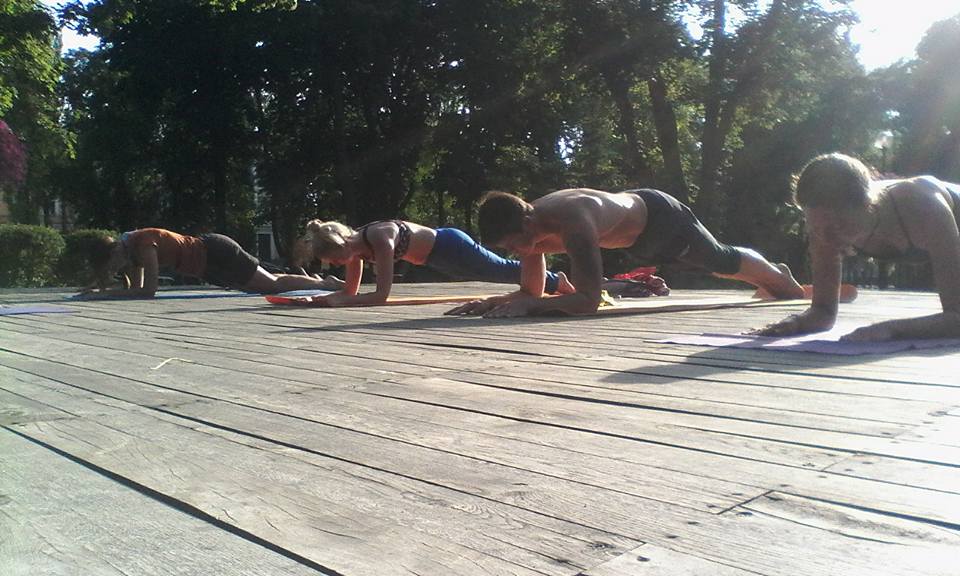 Besides these four well-known Ukrainian yoga styles, there are many original approaches developed by experienced yoga teachers. They can call their classes hatha yoga or any other name, but these classes have some distinctions from generic hatha yoga. For instance, we discovered the Spine and Joint Stabilisation System, developed on the basis of yoga and Redcord, directed at strengthening spinal stabilizing muscles, rehabilitation of back pain and injuries, and prevention of such injuries. Such class is not a usual yoga therapy class based on Shivananda or Iyengar approaches, this is a new and well-thought-out system that uses western research on spine rehabilitation and creatively applies it to yoga practice. And we have visited just a few classes. There are a big number of such experienced teachers who combine yogic techniques with physiotherapy, chi gong, pilates, cross-fit, ayurvedic principles and other practices. Read reviews on teachers’ pages and come to their classes.
Besides these four well-known Ukrainian yoga styles, there are many original approaches developed by experienced yoga teachers. They can call their classes hatha yoga or any other name, but these classes have some distinctions from generic hatha yoga. For instance, we discovered the Spine and Joint Stabilisation System, developed on the basis of yoga and Redcord, directed at strengthening spinal stabilizing muscles, rehabilitation of back pain and injuries, and prevention of such injuries. Such class is not a usual yoga therapy class based on Shivananda or Iyengar approaches, this is a new and well-thought-out system that uses western research on spine rehabilitation and creatively applies it to yoga practice. And we have visited just a few classes. There are a big number of such experienced teachers who combine yogic techniques with physiotherapy, chi gong, pilates, cross-fit, ayurvedic principles and other practices. Read reviews on teachers’ pages and come to their classes.
Notably, many instructors combine yogic techniques with practices of chi gong. In many yoga studios, one can visit classes of tai chi and chi gong or get to a yoga class that includes some elements of these Chinese disciplines (Sidersky yoga studio is particularly remarkable in this regard). In Poland, for instance, these disciplines are practiced separately, and tai chi practitioners rarely add yoga to their routines, and yogis rarely do chi gong. In Kiev, one can have a holistic experience of many practices in one place.
The classes are normally conducted in Russian, sometimes in Ukrainian. You can expect that younger instructors will know some English too, although there is no guarantee. Those teachers who have been studying yoga abroad will speak English - check the bio on their TopYogis page. In any case, even if you don’t know Russian or Ukrainian language, yoga is quite demonstrative practice so most of the things could be understood just by observing them. Moreover, we have discovered that yoga teachers in Kiev are quite attentive to students, especially new students. So just talk to a studio representative or a teacher before the class and you will enjoy a class and teacher’s attention with or without command of local languages.
If you want to practice yoga in Kiev, TopYogis can help you with finding your perfect place:
Catalog of yoga teachers with contact information, class locations, and student reviews
You can filter the results by yoga styles, levels, and rating.
Catalog of yoga studios in Kiev with contact information, teaching instructors, and student reviews
You can find a studio on the map or search by name, filter results by yoga styles, levels, and rating.
If you are a yoga teacher in Kiev, create your profile on TopYogis.
If you are a yoga studio in Kyiv, create your studio page on TopYogis.
Here are some of the reasons why you should create your TopYogis page.
Also, you can read our interviews with yoga teachers from Kiev.

